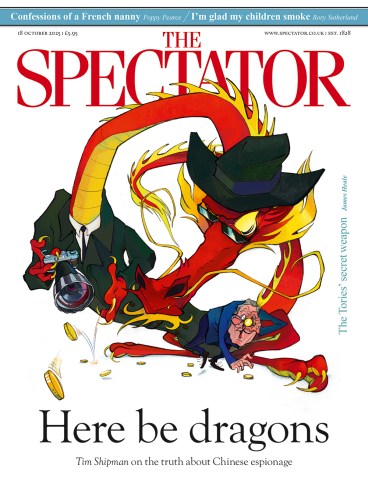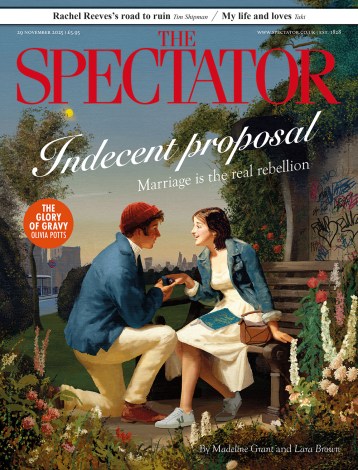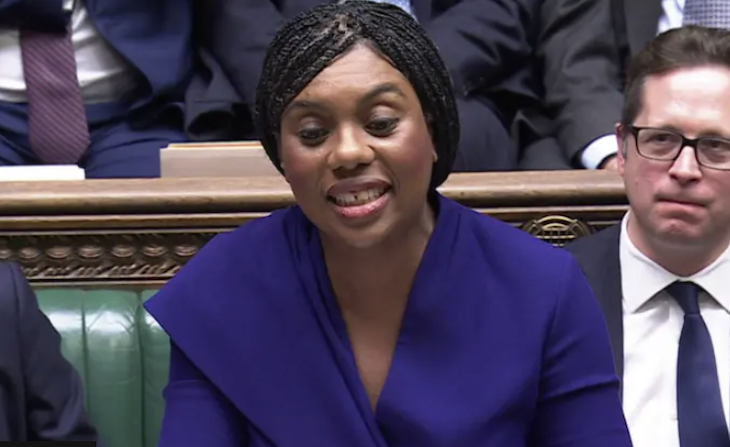
Is there anything menopausal women can’t do (on television)? Last Sunday, as a couple of them were still working on the daring theft of a Salvador Dali painting in ITV1’s Frauds, BBC1 launched Riot Women in which five others form a punk band. Meanwhile, two regular features of British TV remain actresses lamenting the lack of older women starring in drama series – and older women starring in drama series.
Virtually all these shows also recall the headline from the American satirical magazine The Onion: ‘Women empowered by whatever a woman does.’ And that’s certainly true of Riot Women, written by Sally Wainwright (Happy Valley, Gentleman Jack etc.) and therefore set in the Calder Valley, with the author’s message never hard to detect.
The starting point of the message here was how tough life is for females over 50, as they struggle with difficult parents, ungrateful children and rubbish blokes. Struggling more than most was Beth (Joanna Scanlon), a deserted wife whose son wasn’t returning her calls, whose mother had dementia – and who began the programme preparing to hang herself. Fortunately, she was then interrupted by a call from her friend Jess (Lorraine Ashbourne) asking her to join a rock band for a school charity event, and immediately abandoned the noose for rock’n’roll.
By Bethian standards, Jess’s own life didn’t seem so bad, with only a scornful daughter, a senile aunt and an impeccably diverse extended family to support. Nor did that of Jess’s chosen bassist, Holly (Tamsin Grieg), a frankly Sarah Lancashire-style policewoman about to retire. The day before she did, however, she had to apply her gruff wit and kick-ass fighting to a drunk woman waving a knife. For a while, it was touch and go – until the woman was distracted by a sudden hot flush and Holly was able to grab the knife and ask her if she’d thought about HRT.
Speaking ‘as one menopausal woman to another’, Holly discovered that the knife-waver was the homeless Kitty, whom she encouraged to go to the council offices and get on the housing list. But Kitty had other plans: namely, trashing her rubbish ex-lover’s car with a sledgehammer.
Even so, the focus – along with the job of delivering Wainwright’s message – fell mainly on Beth. At the school where she duly works among twentysomething snowflakes, she asked the apparently 15-year-old headmaster: ‘Do you think women of a certain age become invisible?’ (Oddly, he didn’t reply: ‘Well, not on television.’) Not long afterwards, she decided the band should be called Riot Women and sing angry songs ‘about being middle-aged, menopausal and more or less invisible’.
Witches of Essex is one of those documentaries that pretends to be dumber than it is
All she needed now was for her bandmates to drop their plans to cover Abba hits – and to ditch two annoyingly young and pretty women as lead singers. But who to get instead? The puzzle lasted approximately three minutes, before Beth stumbled across none other than Kitty performing a ferocious karaoke version of Hole’s indisputably angry ‘Violet’, which carried on into the closing credits. And with that, I’d suggest, the empowering can begin…
Of course, I’m as susceptible as the next viewer of a certain age to the idea that young people have a cheek to feel so entitled, and that the world should continue to belong to us. And yet, mightn’t there be something equally entitled about thinking like that? If so, this is not a nuance that Wainwright seems keen to explore.
Witches of Essex is one of those documentaries that pretends to be dumber than it is, rather reluctantly adopting the trappings of contemporary television in a bid to make us to watch something it clearly thinks we should be interested in anyway.
These trappings start with the choice of co-presenters, which pairs Professor Alice Roberts with Rylan off The X Factor. His job in this week’s first episode was, at least initially, to play up his Essex credentials, greeting his fellow host with a cheery: ‘Babe, welcome to Chelmsford.’ Hers was to laugh politely at his bantz and try not to look embarrassed when they set up an ‘incident room’ to investigate the ‘cold case’ of a woman executed for witchcraft in 1566.
The more that assorted academics provided thoughtful background and analysis, though, the more obvious it became where the programme’s heart lay: in telling a tangled story as lucidly as it could, but without doing the usual stuff about how people in the past were just like us.
Instead, it stressed how utterly different the world looks when people believe – as they have for most of history – in supernatural forces of all kinds. By the end, Rylan had even shelved the geezer act in favour of intellectual curiosity, and snooty viewers such as me were forced to consider whether the gimmicky framework had ultimately worked pretty well.








Comments